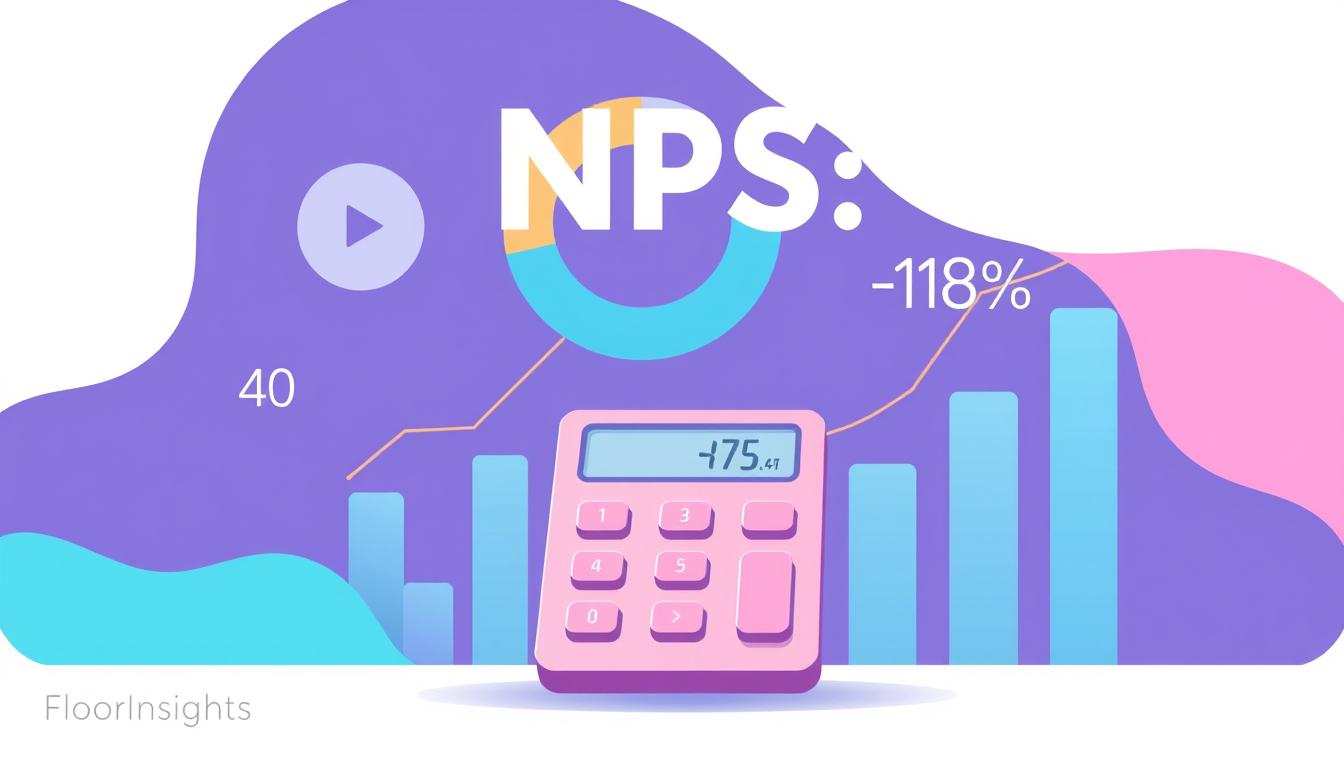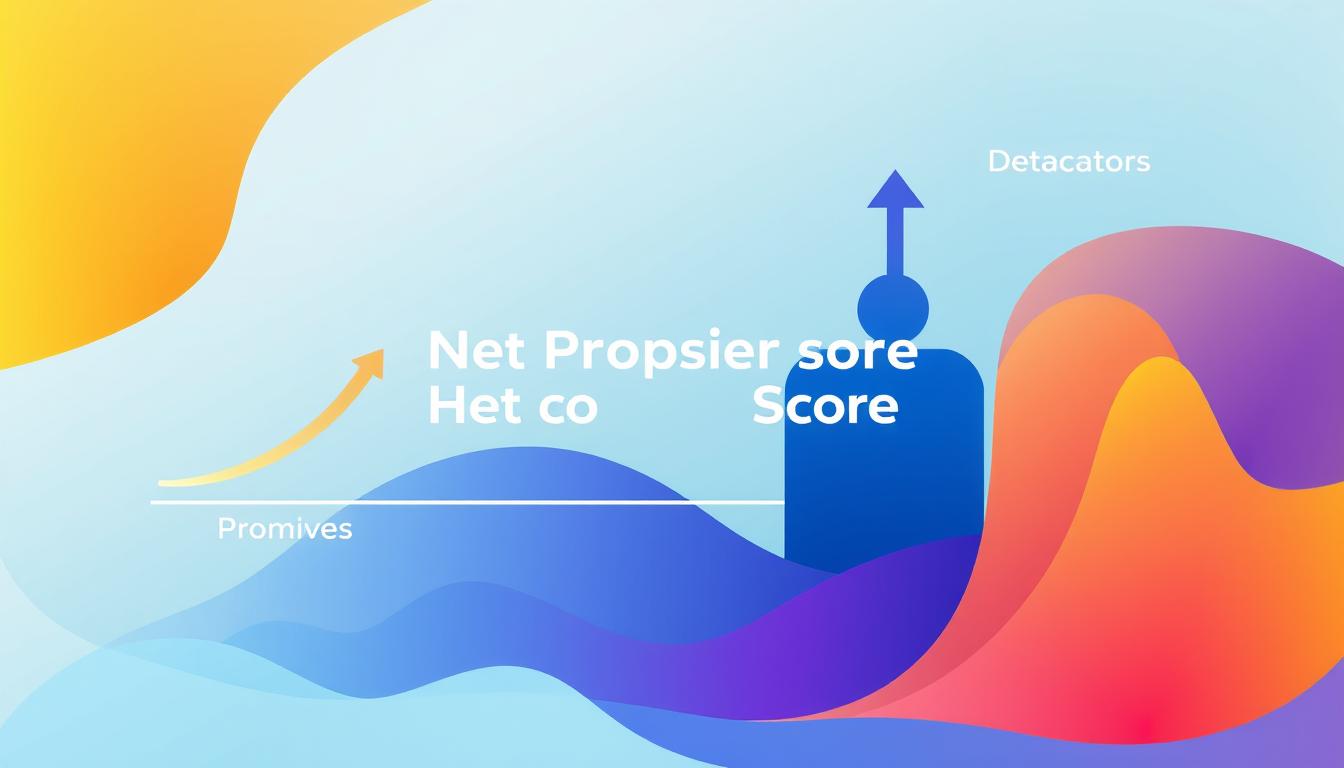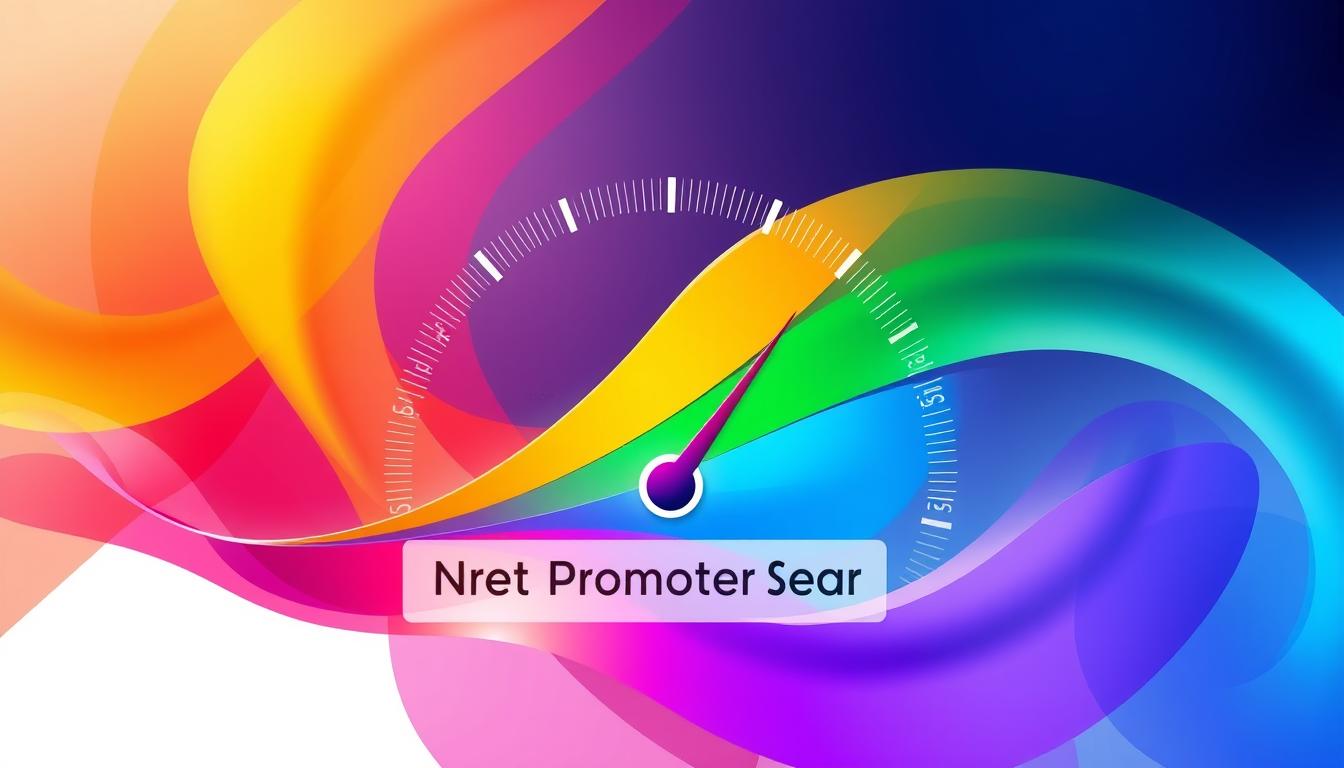The concept of Employee Net Promoter Score (eNPS) has emerged as a fundamental tool in our approach to boosting employee retention. By evaluating the likelihood of employees to recommend their workplace, we can gain critical insights into overall workplace satisfaction and loyalty. Essentially an adaptation of the widely recognized Net Promoter Score, eNPS shifts the focus inward, evaluating sentiments about company culture and management practices.
Key Takeaways:
- Understanding eNPS is crucial in developing effective employee retention strategies.
- eNPS provides a snapshot of workplace satisfaction and loyalty.
- A high eNPS score indicates positive employee morale and engagement.
- Incorporating eNPS can help identify areas for improvement in management practices.
- eNPS directly influences employee retention by fostering a positive workplace culture.
Introduction to eNPS and Employee Retention
In today’s competitive business environment, understanding the employee retention importance and how to gauge employee sentiment is vital. Among the numerous methods available, eNPS stands out as an effective feedback management tool.
Defining eNPS
The eNPS definition (Employee Net Promoter Score) measures employee satisfaction by asking a singular, pointed question: how likely are they to recommend the company as a place to work? This system mirrors the Net Promoter Score (NPS) used for customers. By quantifying employee loyalty, eNPS provides actionable insights that can guide organizational improvements.
Understanding Employee Retention
Employee retention importance cannot be overstated. High retention rates are indicative of a positive work environment and employee satisfaction. Effective retention strategies not only boost company morale but also significantly cut down on costs associated with employee turnover. Leveraging a feedback management tool like eNPS can significantly aid in understanding and enhancing employee retention efforts.
The seamless blend of these methodologies paints a comprehensive picture of employee engagement, paving the way for strategic initiatives aimed at fostering a thriving workplace culture.
How eNPS Works
Understanding how Employee Net Promoter Score (eNPS) operates can significantly enhance our ability to measure brand advocacy and improve employee retention. eNPS surveys are powerful tools designed to gather insights into employee satisfaction and loyalty.
Structure of eNPS Surveys
eNPS surveys typically consist of a single question: “On a scale of 0 to 10, how likely are you to recommend this company as a place to work?” Based on the responses, employees are categorized as Promoters, Passives, or Detractors. This straightforward yet effective format allows us to quickly understand the overall sentiment within the workforce without overwhelming employees with multiple questions.
The frequency of administering eNPS surveys can vary, but best practices suggest conducting them quarterly to keep a pulse on employee sentiment. Regular intervals help in promptly addressing concerns while also tracking improvements over time.
eNPS Calculation Methods
To calculate NPS score, we subtract the percentage of Detractors from the percentage of Promoters. For instance, if 70% of employees are Promoters and 10% are Detractors, the eNPS score would be 60. This metric is crucial as it provides a clear, digestible measure of employee advocacy and satisfaction, essential for gauging the company’s health.
Employers can then analyze these scores to identify trends and make data-driven decisions that enhance the workplace environment. High eNPS scores indicate strong brand advocacy and satisfied employees, while low scores highlight areas needing improvement.
| Category | Score Range | Description |
|---|---|---|
| Promoters | 9-10 | Loyal enthusiasts who encourage others to join |
| Passives | 7-8 | Satisfied but unenthusiastic employees susceptible to attrition |
| Detractors | 0-6 | Unhappy employees likely to speak negatively |
By leveraging eNPS surveys and accurately calculating the NPS score, employers can measure brand advocacy effectively. Regular tracking allows for strategic planning and ongoing improvements to ensure a loyal and motivated workforce.
Importance of Employee Feedback
Employee feedback sits at the heart of organizational growth and improvement. When we actively collect and respond to it, we not only foster a culture of open communication but also significantly bolster overall productivity and morale within our teams.
Effectively utilizing workplace feedback systems allows companies to identify areas that need enhancement. When employees feel heard, their motivation and engagement levels rise. This direct connection often translates to a positive shift in customer interactions and can profoundly improve customer experience.
“Employee feedback is not only essential for maintaining a healthy workplace environment, but it also provides invaluable insights that drive the business forward.”
Let’s consider the following advantages of building robust workplace feedback systems:
- Enhanced Communication: Establishing feedback mechanisms ensures transparent dialogue between staff and management.
- Higher Employee Engagement: When employees see their feedback implemented, they feel valued and more engaged in their work.
- Identifying Training Needs: Regular feedback highlights areas where additional training may be necessary, fostering skill development.
- Strengthening Leadership: Managers receive constructive insights on their leadership styles and areas for improvement.
Comprehensive and strategic workplace feedback systems create a loop of continuous improvement. Employees contribute their perspectives, which then transform into actionable strategies, enhancing the workplace and inevitably leading to improved customer experience. In conclusion, nurturing a culture that prioritizes employee feedback is pivotal for any organization striving for excellence.
Link Between eNPS and Employee Engagement
The Employee Net Promoter Score (eNPS) is instrumental in understanding employee engagement. By evaluating the enthusiasm and dedication of employees, we can gain valuable insights into their overall satisfaction and productivity. Increased employee engagement contributes to a more motivated and empowered workforce, crucial for achieving organizational goals.
Boosting Employee Morale
Effective eNPS surveys are pivotal in boosting employee morale. When employees feel heard and appreciated, their motivation and productivity increase. By regularly monitoring eNPS, organizations can quickly identify and address any issues that might impede employee engagement. This proactive approach ensures employees feel valued and supported, thus fostering a deeper connection to their work and the company.
Creating a Positive Workplace Culture
Creating a positive workplace culture hinges on a robust eNPS framework. A strong eNPS reflects a healthy work environment where employees thrive. Implementing regular feedback mechanisms through eNPS helps cultivate a culture of continuous improvement and open communication, furthering a positive workplace culture. Such an environment not only attracts top talent but also boosts employee morale, ensuring long-term success.

Using Net Promoter Score to Measure Employee Sentiment
Properly utilizing the Net Promoter Score can transform how we gauge employee sentiment within an organization. This metric, traditionally used for customer feedback, can be effectively repurposed to measure internal sentiments, creating a more balanced and insightful employee sentiment analysis.
Benefits of NPS in the Workplace
Integrating the Net Promoter Score into workplace assessments offers numerous advantages. Understanding how employees feel similar to how customers are evaluated provides management with critical insights. Here are some primary benefits:
- Enhanced Proactive Management: By regularly measuring employee sentiment, we can proactively address issues before they escalate.
- Alignment with Corporate Values: NPS helps ensure that employee experiences resonate with the company’s values, promoting a cohesive culture.
- Increased Employee Engagement: Continuous feedback loops foster a sense of belonging and highlight areas for improvement.
Integrating NPS with eNPS
For organizations looking to create a holistic feedback system, combining the Net Promoter Score with eNPS (Employee Net Promoter Score) can be highly effective. This dual approach ensures a comprehensive analysis of both engagement and sentiment. Here’s how these can be integrated successfully:
| Aspect | NPS | eNPS |
|---|---|---|
| Focus | Customer Feedback | Employee Feedback |
| Usage | Gauging Customer Loyalty | Measuring Employee Engagement |
| Integration Point | Sentiment Analysis | Sentiment Analysis |
| Outcome | Improved Customer Retention | Enhanced Employee Retention |
By merging these tools, we can sustain a workforce that is both satisfied and aligned with the company’s objectives, ultimately resulting in better overall performance.
Case Studies: Successful Companies Using eNPS
By examining real-world examples, we can gain valuable insights into how eNPS has been implemented successfully by various organizations. These company case studies demonstrate the positive outcomes of utilizing eNPS, including increased employee retention and satisfaction. Let’s explore two eNPS success stories.
Case Study 1
Adobe, a leader in digital marketing and media solutions, has been at the forefront of transforming its workplace culture through eNPS. Adobe’s strategy involved continuous feedback loops where employees could provide anonymous feedback regularly. This allowed the company to address issues promptly and foster a culture of open communication.
Some significant outcomes from Adobe’s eNPS implementation include:
- Improved employee engagement scores by 30% over three years
- Reduction in employee turnover rates by 15%
- Enhanced overall job satisfaction scores
This demonstrates how eNPS success stories can highlight the role of continuous feedback in driving tangible improvements in workplace culture and retention.
Case Study 2
Zappos, an online shoe and clothing retailer known for its unique corporate culture, has also successfully employed eNPS. By focusing on employee happiness and consistently measuring eNPS, Zappos was able to cultivate a strong sense of community and belonging among its employees.
Key results from Zappos’ eNPS approach include:
- Increased eNPS score by 40 points in two years
- Higher levels of employee loyalty and dedication
- Award-winning customer service stemming from satisfied employees
These company case studies underscore the benefits of eNPS in building a positive workplace environment and enhancing employee retention rates. Realizing these eNPS success stories inspires other organizations to adopt similar strategies for their workforce.
The Impact of eNPS on Employee Retention Rates
The connection between the eNPS impact and employee retention rates cannot be overstated. Evidence suggests a strong correlation where higher eNPS scores directly lead to improved retention rates, thereby enhancing overall workforce stability. The eNPS provides invaluable insights into employee satisfaction, allowing organizations to identify potential issues before they escalate.
In our experience, companies with a robust eNPS framework tend to exhibit lower turnover rates compared to those disregarding this metric. Employees who are more likely to promote their workplace naturally demonstrate a stronger sense of loyalty and commitment. This sentiment permeates through the organizational structure, reinforcing workforce stability.
“Measuring eNPS is essential to not just gauge employee sentiment but to ensure long-term retention,” says a leading HR expert. “It’s a proactive approach that yields sustained benefits.”
Let’s delve into some statistics that clearly illustrate the eNPS impact on employee retention rates. The table below highlights the relationship by comparing companies with varying eNPS scores and their corresponding turnover rates.
| eNPS Score | Turnover Rate (%) |
|---|---|
| High (70-100) | 5% |
| Medium (40-69) | 10% |
| Low (0-39) | 20% |
The statistical analysis underscores that companies with high eNPS scores experience significantly lower turnover rates, aligning with better workforce stability. This data emphasizes why incorporating eNPS into HR strategies is paramount for sustainable success. By maintaining high eNPS scores, companies not only enhance retention rates but also foster a more stable and engaged workforce.
Implementing eNPS in Your Organization
Integrating eNPS into an organization’s feedback culture is a strategic move that can significantly enhance employee engagement and retention. To help you embark on this journey, we have outlined the necessary steps to get started and highlighted some common challenges you might face along with practical solutions to overcome them.
Steps to Begin
The first step in implementing eNPS is to clearly define the objective of your survey. Identify what specific insights you seek from your employees regarding their workplace experience. Next, design your eNPS survey by drafting concise questions that reflect your goals. It is crucial to keep the survey short to encourage maximum participation and honest responses.
Once the survey is designed, choose an appropriate platform to deploy it. Ensure the platform you select allows for anonymity as it promotes candid feedback. Schedule the survey at a regular interval, be it quarterly or bi-annually, to maintain a steady flow of insights that can guide organizational improvements.
Common Challenges and Solutions
One of the predominant organizational challenges in implementing eNPS is achieving a high response rate. Employees may hesitate to participate due to concerns over anonymity or survey fatigue. A practical solution is to emphasize the confidentiality of their responses and clarify how their feedback will lead to actionable changes. Another challenge is the potential for biased feedback. This can stem from poorly framed questions or a lack of understanding of the survey’s purpose. To mitigate this, pilot test the survey with a small group and refine the questions based on their input.
Additionally, there may be resistance to change from management or team leaders, especially if the feedback indicates significant areas for improvement. Overcoming this challenge requires consistent communication of the benefits of eNPS, along with real-life examples of successful implementations from other companies. Highlighting how eNPS insights can drive positive organizational change will encourage buy-in from all levels of the organization.
By thoroughly planning your approach and addressing common challenges with practical solutions, implementing eNPS can become a transformative process for your organization, fostering a more engaged and loyal workforce.
FAQ
What is eNPS and how does it relate to employee retention?
eNPS, or Employee Net Promoter Score, is a crucial metric in assessing and improving employee retention. By measuring employees’ willingness to recommend their workplace to others, organizations can gain valuable insights into overall workplace satisfaction and loyalty. As an adaptation of the customer loyalty metric, eNPS provides a reflection of internal sentiments toward company culture and management practices, thus aiding in the formulation of effective employee retention strategies.
How is eNPS defined and why is it important for employee retention?
eNPS is defined as a feedback management tool that gauges employee satisfaction by asking how likely they are to recommend their workplace to others. Understanding employee retention is key as it ensures a capable, engaged workforce. High employee retention rates often indicate a positive work environment and high job satisfaction, which can lead to a more stable and cost-effective organization.
What is the structure of eNPS surveys and how are eNPS scores calculated?
eNPS surveys typically consist of a single question that asks employees how likely they are to recommend their workplace to others, followed by a space for additional comments. eNPS scores are calculated by subtracting the percentage of detractors (those who wouldn’t recommend the company) from the percentage of promoters (those who would recommend the company). Understanding how to calculate the NPS score helps in interpreting employee loyalty and advocacy.
Why is collecting employee feedback important for an organization?
Collecting employee feedback is essential for organizational growth and improvement. By responding to the feedback, companies can make informed decisions that improve customer experience, enhance workplace culture, and foster a positive environment that directly impacts the quality of products and services offered. Effective workplace feedback systems play a crucial role in this process.
How does eNPS boost employee morale and contribute to a positive workplace culture?
A high eNPS indicates strong employee morale and engagement. When employees feel valued and listened to, it boosts their morale and productivity. This, in turn, fosters a positive workplace culture where employees are motivated, satisfied, and more likely to contribute to the company’s success. Ensuring employee engagement and a positive culture are interlinked with eNPS scores.
What are the benefits of using Net Promoter Score in the workplace?
Using Net Promoter Score (NPS) in the workplace helps measure employee sentiment and aligns management with workforce expectations. Benefits include proactive management, stronger alignment with corporate values, and a comprehensive feedback loop. Integrating NPS with eNPS provides a holistic overview of both customer and employee satisfaction, benefiting overall organizational health.
Can you provide examples of companies that have successfully implemented eNPS?
Yes, many successful companies have implemented eNPS to improve employee retention and satisfaction. Real-world case studies highlight strategies and positive outcomes, demonstrating the efficacy of eNPS in creating a more engaged and stable workforce. These success stories illustrate the practical benefits of adopting eNPS in various organizational settings.
What is the impact of eNPS on employee retention rates?
High eNPS scores are often correlated with low employee turnover rates. By predicting and influencing workforce stability, eNPS serves as a reliable indicator for employee retention. A strong eNPS score suggests a satisfied workforce, which typically leads to greater loyalty and reduced costs associated with employee turnover, making it a key metric for effective HR strategies.
What are the steps to begin implementing eNPS in an organization?
To implement eNPS in an organization, begin by designing a survey that asks employees about their likelihood to recommend the workplace. Ensure regular collection and analysis of feedback, and take actionable steps based on the insights gained. Address common challenges, such as ensuring anonymity and encouraging honest feedback, with practical solutions to maximize the effectiveness of the eNPS tool.






